

Next Store: The Future Has Arrived. Have you ever wondered why there are so few examples of a fully realized and executed digital experience (DX)-based design in the retail industry?
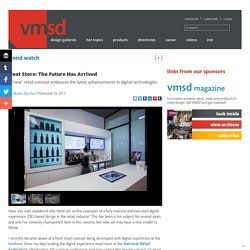
This has been a hot subject for several years, and one I’ve certainly championed here in this column; but now, we may have a new model to follow. I recently became aware of a fresh retail concept being developed with digital experience at the forefront. Since my days leading the digital experience retail tours at the National Retail Federation (Washington, D.C.) annual conference, and now writing this regular column, it’s been difficult to point to many retailers who weren’t just treating digital as a novelty, and few new brands have been created with digital engagement at their essence.
Tuned Up. We’ve all been there: You walk into a brightly lit store at night, and the intensity hurts your eyes.
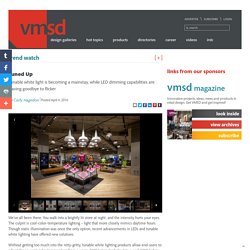
The culprit is cool-color-temperature lighting – light that more closely mimics daytime hours. Though static illumination was once the only option, recent advancements in LEDs and tunable white lighting have offered new solutions. Without getting too much into the nitty-gritty, tunable white lighting products allow end-users to adjust the source’s color temperature from a warm 2000 kelvin (or below) to a cool 6000 kelvin (or above), depending on the manufacturer. In layman’s terms, the user can “tune” the amount of white light in a space to their liking. Tunable white light can also be used to support circadian rhythms, our biological “clocks” that control the release of hormones triggering sleep-wake cycles.
So what about retail? That doesn’t mean stores can’t use lighting to support circadian rhythms, but it would have little to no effect with short exposure. Share Video. Mannequins: For Fun and Profit. The Internet is constantly changing the way people shop.
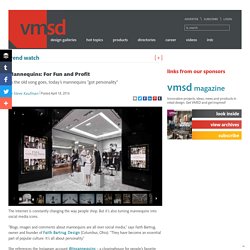
But it’s also turning mannequins into social media icons. “Blogs, images and comments about mannequins are all over social media,” says Faith Bartrug, owner and founder of Faith Bartrug Design (Columbus, Ohio). “They have become an essential part of popular culture. It’s all about personality.” She references the Instagram account @Insannequins – a clearinghouse for people’s favorite mannequin installations – as well as other Instagram accounts of people who post fun mannequin images. German fashion designer Michael Michalsky created Internet buzz this year with his “Reality” exhibit, featured at Mercedes-Benz Fashion Week Berlin this past January, which included foot-high, 3-D printed mannequins wearing miniatures of his couture.
Next Store: Interactive Digital Experiences Come of Age. There is a new acronym to add to your digital era glossary: It’s IxD, or interaction design.

Ideo (Palo Alto, Calif.) co-founder Bill Moggridge has been talking about it since the mid-1980s when he, along with designer and researcher Bill Verplank, first coined the term. In his 2006 book, “Designing Interactions,” Moggridge predicted the future existence of this new design discipline, dedicated to creating imaginative and attractive solutions in a virtual world, where one could design behaviors, animations and sounds.
It’s a credit to Moggridge’s vision that nearly 30 years later, IxD is still seen as a burgeoning practice. The difference today is that digital hardware and software allow our creative community to apply design disciplines in new ways that impact consumer behaviors. Captivating Customers. Nike (Beaverton, Ore.) recently launched two major campaigns for its London flagship stores, transforming its Jordan brand and authentic basketball annex into visually alluring installations.
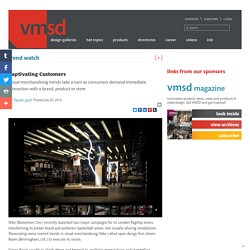
Showcasing some current trends in visual merchandising, Nike called upon design firm Green Room (Birmingham, U.K.) to execute its vision. Green Room sought to climb above and beyond its aesthetic expectations and storytelling demands for the Kobe XI and CP3.XI product lines. The result: a visual recreation of speed and lightning, respectively. Showcasing Nike’s popular brand collections (i.e., the Michael Jordan and Kobe Bryant lines of athletic apparel and footwear), the displays intended to both educate and grab the attention of passersby, fulfilling customers’ needs for immediate information about the products.
Next Store: Virtual Reality Has Arrived. I was recently in downtown Los Angeles while the innovative Electronic Entertainment Expo (E3) was setting up shop at the convention center, and I became intrigued when I learned that more than 70,000 attendees were expected.
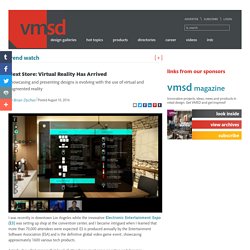
E3 is produced annually by the Entertainment Software Association (ESA) and is the definitive global video game event, showcasing approximately 1600 various tech products. A trade show that garners that level of attendance must serve an active and dynamic marketplace. And, where there are gamers, there is bound to be digital innovation occurring that will, no doubt, drive discussions surrounding virtual reality (VR) and augmented reality (AR) for the coming years. This ever-evolving market is one that those of us in the retail sphere should look to for inspiration, or at least keep our collective eye on. The applications of 3-D visualization technology extend far beyond the entertainment or gaming industries. 26 Visual Merchandising Innovations.